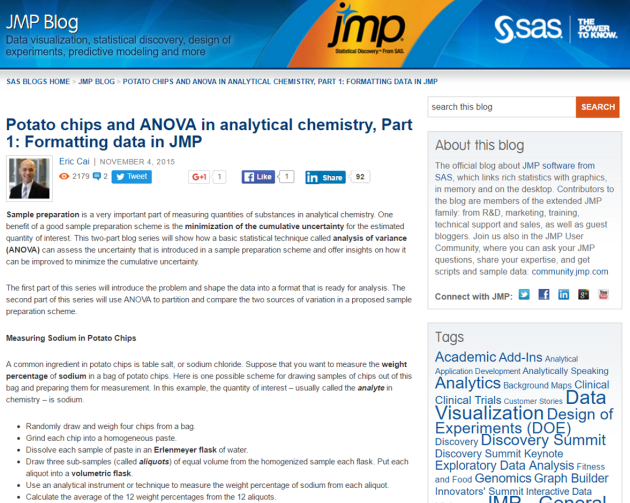Potato Chips and ANOVA, Part 2: Using Analysis of Variance to Improve Sample Preparation in Analytical Chemistry
November 17, 2015 Leave a comment
In this second article of a 2-part series on the official JMP blog, I use analysis of variance (ANOVA) to assess a sample-preparation scheme for quantifying sodium in potato chips. I illustrate the use of the “Fit Y by X” platform in JMP to implement ANOVA, and I propose an alternative sample-preparation scheme to obtain a sample with a smaller variance. This article is entitled “Potato Chips and ANOVA, Part 2: Using Analysis of Variance to Improve Sample Preparation in Analytical Chemistry“.
If you haven’t read my first blog post in this series on preparing the data in JMP and using the “Stack Columns” function to transpose data from wide format to long format, check it out! I presented this topic at the last Vancouver SAS User Group (VanSUG) meeting on Wednesday, November 4, 2015.
My thanks to Arati Mejdal, Louis Valente, and Mark Bailey at JMP for their guidance in writing this 2-part series! It is a pleasure to be a guest blogger for JMP!





Recent Comments